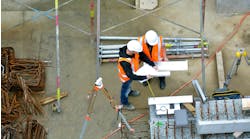Society is used to having smartphones, but now the cities around us are getting smarter as well. The number of smart cities around the world is expected to grow exponentially over the next few years. In fact, by 2050, 70% of the world’s population is expected to be living in urban areas that are much more intelligent than cities of the past.
Drayton by Schneider Electric recently created a tool that will tell you what that picture might actually look like. Enter your age on the interactive graphic, and get an idea of how things might change during your lifetime. From flying taxis by 2020, buildings you can ask to change the temperature (thanks to artificial intelligence) by 2040, and takeaways delivered by drones by 2050, the future of smart cities promises to be astonishing.



